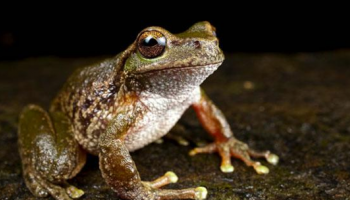Remember Star Trek’s Replicator, where food was synthesized on demand? Maybe not, but earlier this year, NASA channelled funding into a new research project aimed at creating a 3D food printer curiously akin to the Replicator. Although this printer won’t yet be able to source the appropriate subatomic particles needed to build objects literally out of thin air, it will be able to combine specific powders needed to produce food with the structure, texture, and even smell of its intended form. Is this the food of the future?
In 2013’s latest instalment of ‘life imitating Star Trek’, scientists in the Netherlands have managed to manufacture a slab of meat from one syringe full of cells. Taste testers in London last month described the world’s first lab grown burger as “close to meat”, with intense taste and perfect consistency – just not that juicy, owing to the absence of fat cells.
Manufactured meat leans more towards science fact than science fiction, yet the processes involved are equally as perplexing. This latest project began (after a hefty donation from Google co-founder Sergy Brin) when Professor Mark Post extracted stem cells from the shoulder of a cow and placed them in a petri dish. Borrowing medical science know-how, he applied a growth-promoting hormone to induce the tissue to self- replicate, and the product was a tiny strand of meat. Post then knitted 20,000 strips of this cultured muscle tissue into one burger, adding some egg powder, beetroot juice, breadcrumbs, salt, saffron, flavour and colour to the otherwise white meat.
Schmeat. Test tube meat. Frankenburger. Call it what you will, but in vitro meat may be our dinnertime destiny. The Frankenburger was not the first of its kind. In 1996, two artists in Western Australia started an experimental art project called Tissue Culture and Art. In one instalment, Oron Catts and Ionat Zurr grew frog skeletal muscle over biopolymer for food consumption. The installation culminated in a feast of sorts, where the art became the hors d’oeuvres.
Yes, experimental art gave us the first laboratory-grown steak, but this is more than pure historical precedent. The artists’ intentions to probe the “apparent uneasiness people feel when someone ‘messes’ with their food” leap frogged simple genetic modification and challenged public apprehension even further. Such a food future was even predicted by Winston Churchill in his 1931 essay, Fifty Years Hence, contending “we shall escape the absurdity of growing a whole chicken in order to eat the breast or wing, by growing these parts separately under a suitable medium”.
Is the way we consume meat an absurdity? The benefits of in vitro meat make it seem so. In vitro is the only real meat product that is completely vegetarian. No animals killed, no animal parts wasted. Whether or not it counts as kosher is yet to be decided, but as PETA spokesperson Ben Williamson so subtly puts it: “The meat industry, as it stands, causes enormous animal suffering and environmental damage”. The stats back him up: livestock production is responsible for 18% of global greenhouse gas emissions, 27% of the global water footprint, and 33% of global land use. And although I do enjoy a regular farm-fresh steak, it’s hard even for carnivores to deny the tragic unproductiveness of mining land to grow crops, feeding the crops to animals, then feeding the animals to humans.
Julian Savulescu, a professor of ethics at Oxford, declared: “we have a moral obligation to support this kind of research”. It’s impossible to contest the negative impact of meat consumption, and cultured meat pro- vides the possibility of drastically reducing energy, land use, water use and greenhouse gas emissions, without compromising for tofu burgers. Not to mention the most obvious benefit: the living animal is left to live out the entirety of its life slaughterhouse-free.
So why does such fervent public resistance still remain? Science fiction may offer another answer here, in reference to such manufactured fodder as Soylent Green (the ‘high-energy plankton’ rations of Harry Harrison’s dystopian New York). Humans innately hold connotations between what is ‘natural’ and what is ‘good’. How do we know we aren’t devouring some lip-smacking [Soylent Green spoiler alert] fellow humans? Yes, maybe that’s slightly extreme, but we as a society are already so oblivious to the processes that bring our food to our plates, that adding an extra, highly complex, biomedical step to food production is undoubtedly an unsettling prospect.
But let’s frame it this way: the ability to produce a steak from a collection of cells may provide astronauts with the sustenance needed in order to travel to Mars. Should we deny these food technologies the license of ‘playing God’ for reasons we can barely put a finger on, or should we suppress our instincts and accept them as a logical solution to a sustain- able and knowledgeable future? I guess the answers are in the stars.


